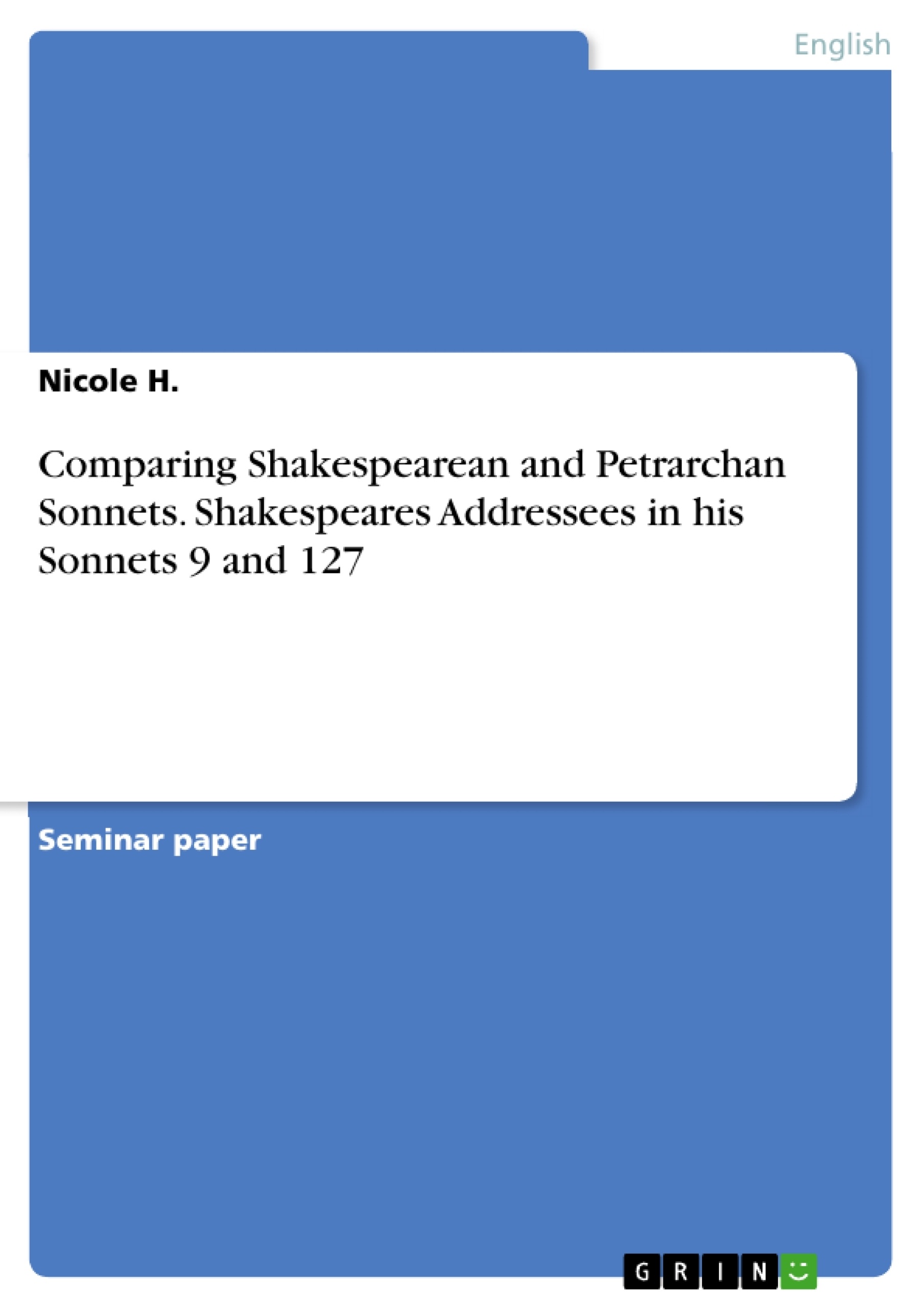This paper tries to expose the differences between traditional "Petrarchan Sonnets" and "Shakespearean Sonnets", with a specific focus on Shakespeare´s sonnets 9 and 127.
In order to do this the author will firstly introduce the theory of traditional sonnets, particularly with regard to form, addressees and themes. Furthermore, I he will have a closer look at the abovementioned addressees of Shakespeare´s sonnets.
Table of Contents
- Introduction
- Traditional sonnets: Theory
- Form
- Addressees/ Ideal of beauty
- Themes
- Shakespeare's sonnets
- Interpretation of Sonnets 9 and 127 with regard to their addresses and their themes
- What is new about the addresses of Shakespeare's sonnets regarding to form, addressees and themes/ How do these sonnets differ from the tradition
- Possible real identities of the ‘Young Man' and the ‘Dark Lady’
- Conclusion
Objectives and Key Themes
This seminar paper aims to analyze and compare the differences between traditional 'Petrarchan Sonnets' and 'Shakespearean Sonnets', with a particular focus on the addressees and their associated themes. This will be achieved through an examination of the form, addressees, and themes of traditional sonnets, followed by a detailed analysis of Shakespeare's sonnets 9 and 127. The paper will further explore the unique aspects of Shakespeare's sonnets, including the possible real-life identities of the 'Young Man' and the 'Dark Lady'.
- Comparison of traditional 'Petrarchan Sonnets' and 'Shakespearean Sonnets'
- Analysis of Shakespeare's sonnets 9 and 127
- Exploration of unique aspects of Shakespeare's sonnets
- Potential real-life identities of the 'Young Man' and the 'Dark Lady'
Chapter Summaries
- Introduction: This chapter provides an overview of William Shakespeare's life and work, highlighting his significance as a playwright, poet, and actor. It mentions the publication of his sonnets in 1609 and discusses the division of the sonnets into two groups based on their addressees: the 'Young Man' and the 'Dark Lady'.
- Traditional sonnets: Theory: This section introduces the theory of traditional sonnets, focusing on their form, addressees, and themes. It explains the structure of the Petrarchan sonnet, its typical rhyme scheme, and the concept of the 'volta'. It also discusses the Elizabethan ideal of beauty and its influence on the portrayal of women in traditional sonnets.
- Shakespeare's sonnets: This chapter delves into the analysis of Shakespeare's sonnets, with a specific focus on sonnets 9 and 127. It explores the interpretation of these sonnets in relation to their addressees and themes. Furthermore, it investigates the novel aspects of Shakespeare's sonnets in terms of their form, addressees, and themes.
Keywords
This seminar paper focuses on the key concepts of traditional sonnets, Shakespearean sonnets, form, addressees, themes, ideal of beauty, Petrarchan sonnet, Elizabethan era, 'Young Man', 'Dark Lady', and sonnet interpretation.
- Quote paper
- Nicole H. (Author), 2016, Comparing Shakespearean and Petrarchan Sonnets. Shakespeares Addressees in his Sonnets 9 and 127, Munich, GRIN Verlag, https://www.grin.com/document/471267



